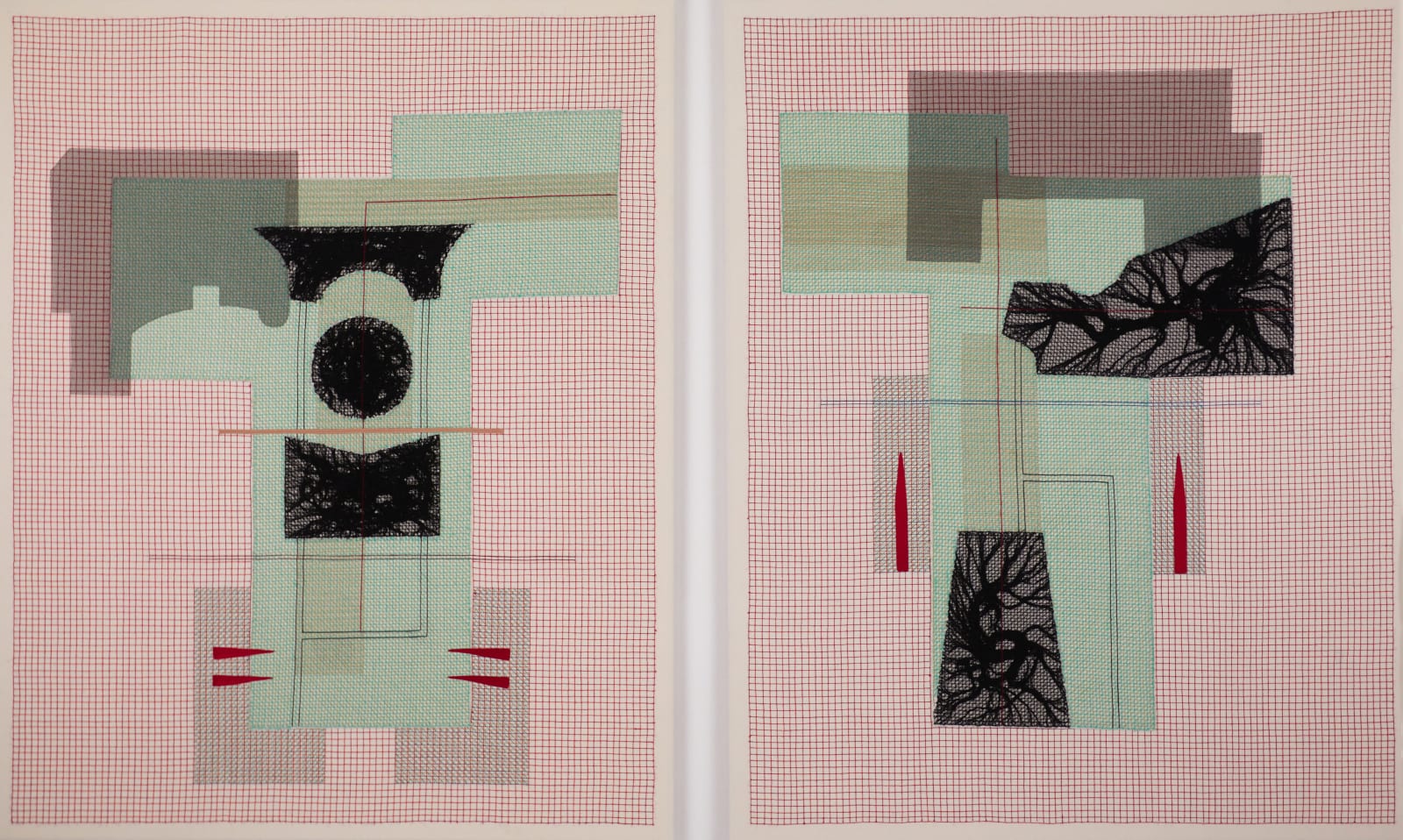
Filwa Nazer
49.6h x 81.1w in (both panels)
Brutalism extends Filwa Nazer’s ongoing exploration of the unsettling
relationship between body and built environment. In this piece, the tension
between comfort and constraint, between delicacy and disturbance,
becomes more acute. What begins as an orderly composition, anchored by
soft materials and familiar motifs, quickly reveals disquieting, shifting
layers. Nazer’s use of embroidered fabrics, and intricate stitching unveils
sharpness in pointed edges, sometimes violent intersections and strange
forms. The comfort implied by the familiar material and bright colours is
unsettled by the unease in their composition: the rigidity and uncanny
orderliness of diagrams and plans that ultimately prove untenable.
Clothing and architecture, Nazer’s twin containers, are rendered as
overlapping structures. The green mirrored form at the centre of the
diptych, shaped like a floorplan of a once-inhabited home, becomes a
symbolic double of the body itself: symmetrical yet unsettling. These
diagrammatic outlines recall sewing patterns and architectural plans,
abstracted into geometric repetition and annotated through thread and
texture. Hovering above and intersecting this form are darker shapes,
perhaps future, unfamiliar spaces rendered in black tulle, suggesting a
temporal breach or dislocation between a place of memory and projection.
Within this piece’s outline, tangled, noisy black threads trace the residue of
garments that no longer fit, patterns of past selves that resist resolution.
These disruptions mirror the psychological strain of transition: the attempt
to reconcile growth with spaces, either emotional, architectural, or social,
that can no longer contain it. As with the broader body of work, Brutalism
suggests as a site of negotiation, where repetition, fragmentation, and the
collision of materials make visible a lived process of shifting, outgrowing,
and fitting otherwise.